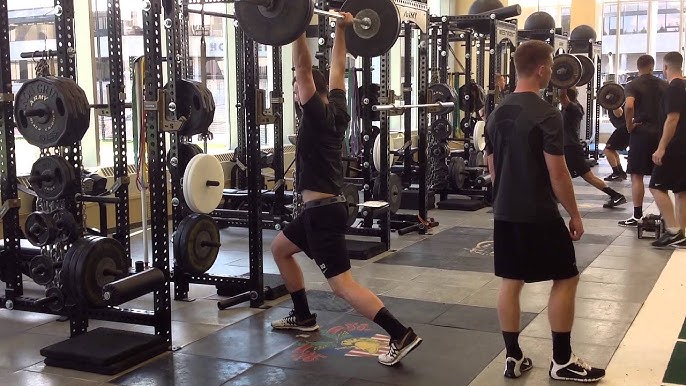Differentiating between training tactical and sport athletes

Tactical athletes in the first responder professions of law enforcement, firefighters, corrections, emergency medical personnel, and the military utilize strength training in their exercise regimens to better themselves and the communities they serve. Sports athletes also utilize strength training to better themselves for the individual sport and the team they play for.
Sports athletes include team sports and individual sports. These events do contribute to a team’s achievement but they are inherently based upon the success of an individual during their specific event.
So, what is the difference between tactical and athletic strength training?
First and foremost, strength training is training that finds its foundation in exercises that incorporate an external load with the human body, including weight, barbells, dumbells, machines, resistance bands, medicine balls, and utilizing your body weight. In tactical and athletic strength training, the primary objectives are training the body in the three anatomical planes of motion, which are the sagittal, frontal, and transverse planes. Furthermore, both athletes will incorporate the basic movement patterns of squat, hinge, push, pull, and core-centric. Tactical and sport athletes do not necessarily train for aesthetics but for strength, power, and muscular endurance.
Tactical athletes, depending on their job description, might train based on what they have historically known or what they have been taught. If they are not basing their physical fitness regimen upon a progressive detailed strength and conditioning program, then they may be falling short of achieving optimal athletic performance and their career. Strength and conditioning are paramount to elicit premium physiological adaptations that will result in becoming a better tactical athlete. A tactical athlete has to be able to have all the physiological adaptations that a sports athlete has, but they have to have it day in and day out, every day of their profession.
Furthermore, they must exhibit qualities of resiliency and recovery, which are both key components in safely maximizing their career and, more importantly, longevity in life. The tactical athlete, unlike a sports athlete, has no off-season. This means they do not have months and months to prepare to be at optimal performance for a set period based on a season’s game schedule. They have to be at peak performance every day during the year and have to be able to make critical and life-changing decisions for themselves, coworkers, and respective third parties. They are typically afforded a working schedule for a few months at a time. Their schedule can be either an eight, 10, or 12-hour day and may or may not include shift work, which depending on the agency or department may rotate every three to four weeks. This abnormal sleep schedule disrupts the normal body chemistry of hormone production and plays a significant factor in the ability of the tactical athlete to perform optimally when called upon.
Those in the military can be on missions, TDYs, or deployments in which they may or may not have access to a gym and traditional equipment. Therefore, it is incumbent for the tactical athlete to have the ability to improvise and program an exercise program for them and their soldiers instantly.
Therefore, it is incumbent upon the tactical athlete to constantly adapt their changing schedule based upon the aforementioned variables. The tactical athlete is not afforded the luxury to take extended weeks or months off in the off-season to rest their body from the previous season. The tactical athletes’ season is now, it’s today and every day until their commitment to service is completed or one retires. Lastly, many tactical athletes have to take a physical or PT tests several times throughout the year for not only overall job performance but for different job descriptions.
» ALSO SEE: Should tactical athletes incorporate judo into training?
The sports athlete, depending on the sport, will largely be based upon the actual position they play. First of all, a sports athlete is generally prescribed a macrocycle or a yearly program. With a macrocycle, the athlete is presented with the big picture of what their training plan involves. Although the program can be up to four years or up to six months out, there is a projected outcome, vision, or physiological adaptation for the sport. This entails the sports athlete making a linear progression with different mesocycles or monthly programs spread throughout to have them optimally prepared for peak performance for their “in or competitive season” in which they need to be at optimal performance. The athlete will begin their off-season program in which they typically partake in activities other than their respective sport. Subsequently, the sports athlete then transitions to sport-specific training or SP phase, which is met with higher intensity progressively, a decrease in GPP work, and a focus on basic strength. This is where the pre-season/first transition begins or the pre-competitive phase and both strength and power are programmed in.
Last is the post-competitive or post-season phase in which the sports athlete is afforded an active rest, does not actively engage in resistance training, and partakes in recreational activities other than the sport that was just completed.
Daniel J. Borowick, MS, CSCS, and founder of DOMEX Strength and Fitness, is a former DEA Special Agent who has over 27 years of tactical experience in federal (DEA) and state (New Jersey State Police). Currently, he is a strength and conditioning specialist serving in the U.S. Army’s (H2F) Holistic Health and Fitness Program. You can reach him through their website of www.Domexstrengthandfitness.com, via Instagram and Facebook @Domexstrengthandfitness, or Domexstrengthandfitness@gmail.com.



